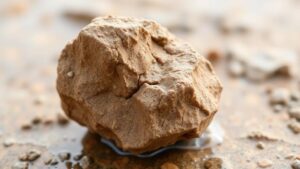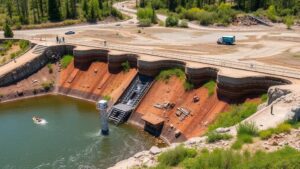How to Use Sound Waves to Identify Hidden Cavities and Traps in Treasure Sites
How to Use Sound Waves to Identify Hidden Cavities and Traps in Treasure Sites
The application of sound waves in the exploration of treasure sites has emerged as a groundbreaking technique in archaeology and treasure hunting. This method, generally referred to as acoustic surveying, leverages different frequencies and wave characteristics to uncover hidden cavities and traps. By understanding the principles behind sound wave propagation and employing specialized equipment, treasure hunters can identify potential sites for excavation with greater accuracy.
The Science of Sound Waves
Sound waves are mechanical vibrations that travel through a medium, be it air, water, or solid materials. When sound waves encounter different materials, they behave in predictable ways, which can be utilized to detect hidden structures. There are primary properties of sound waves to consider:
- Frequency: The pitch of a sound wave, which affects its traveling capability through different materials. Higher frequencies are absorbed by softer materials, while lower frequencies penetrate denser materials.
- Amplitude: The height of the sound wave, determining the loudness of the sound. Changes in amplitude can indicate the presence of anomalies in the ground.
- Reflection and Refraction: When sound waves hit a boundary between two different media, they can either bounce back (reflection) or bend (refraction). These behaviors are crucial for identifying voids.
Techniques for Sound Wave Detection
Several methods that utilize sound waves can be used to locate hidden cavities:
Ground Penetrating Radar (GPR)
GPR is a non-invasive technique that employs high-frequency radio waves. It sends pulses into the ground and measures the reflected signals from subsurface anomalies. This technique has been widely used for detecting archaeological sites and treasure. For example, in 2006, a study near the ruins of a 17th-century building in England utilized GPR to successfully locate previously undocumented cavities where treasure was believed to be buried.
Seismic Surveys
This method uses sound waves generated by a small explosion or a mechanical source to create an image of the subsurface. The differences in wave velocity through different materials allow for the identification of anomalies such as traps or cavities. For example, during a 2010 survey in the Caribbean, seismic waves were employed to locate shipwrecks beneath the ocean floor, highlighting their effectiveness in underwater treasure hunting.
Data Analysis and Interpretation
Once the sound waves are captured and data is collected, analyzing this data is critical. Geophysicists utilize advanced software to interpret the results, mapping the variations in amplitude and distribution of reflected waves. This can indicate:
- Locations of hidden chambers.
- Cavities that could contain artifacts.
- Potential traps or hazards that might complicate excavations.
For example, a treasure hunter utilizing seismic data interpretation identified a submerged vessels remains off the coast of Florida, which previously evaded discovery through traditional excavation methods.
Real-World Applications and Case Studies
Several notable case studies exhibit the efficacy of sound wave techniques in treasure hunting:
- The Lost Treasure of the Flor de la Mar: In 2018, divers collaborated with geophysicists to use acoustic surveying techniques to identify the resting place of the Flor de la Mar, a Portuguese ship that sank in 1511. r sonar systems detected large anomalies, leading to successful recovery efforts.
- Egyptian Tomb Discovery: Recent applications of GPR in the Valley of the Kings revealed hidden chambers believed to belong to undiscovered pharaohs. Sound wave analysis showed significant variations in the ground, leading researchers to key locations for excavation.
Challenges and Limitations
While the use of sound waves for detecting hidden cavities offers significant advantages, it also comes with challenges:
- Material Interference: Complex soil compositions or the presence of groundwater can hinder sound wave propagation, leading to inaccuracies.
- Equipment Costs: High-quality acoustic surveying equipment can be expensive, which might deter individual treasure hunters.
Actionable Takeaways
For those looking to incorporate sound wave technology into their treasure-hunting endeavors, consider the following steps:
- Research and invest in appropriate sound wave detection equipment that fits your budget and needs.
- Learn about the geological characteristics of the areas you are exploring to maximize the effectiveness of sound wave techniques.
- Collaborate with professionals in geophysics for data analysis to ensure accurate interpretation of results.
Using sound waves to explore for hidden cavities and traps at treasure sites is revolutionizing archaeology and treasure hunting. With continued advancements in technology and data analysis, the potential for discovery expands exponentially.



